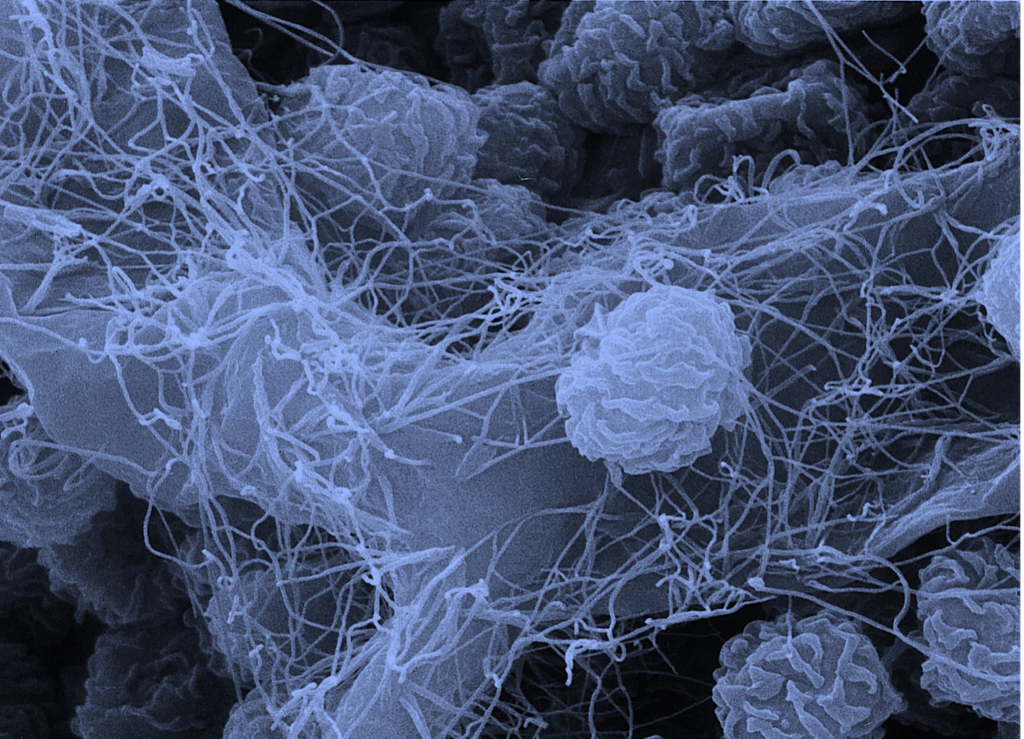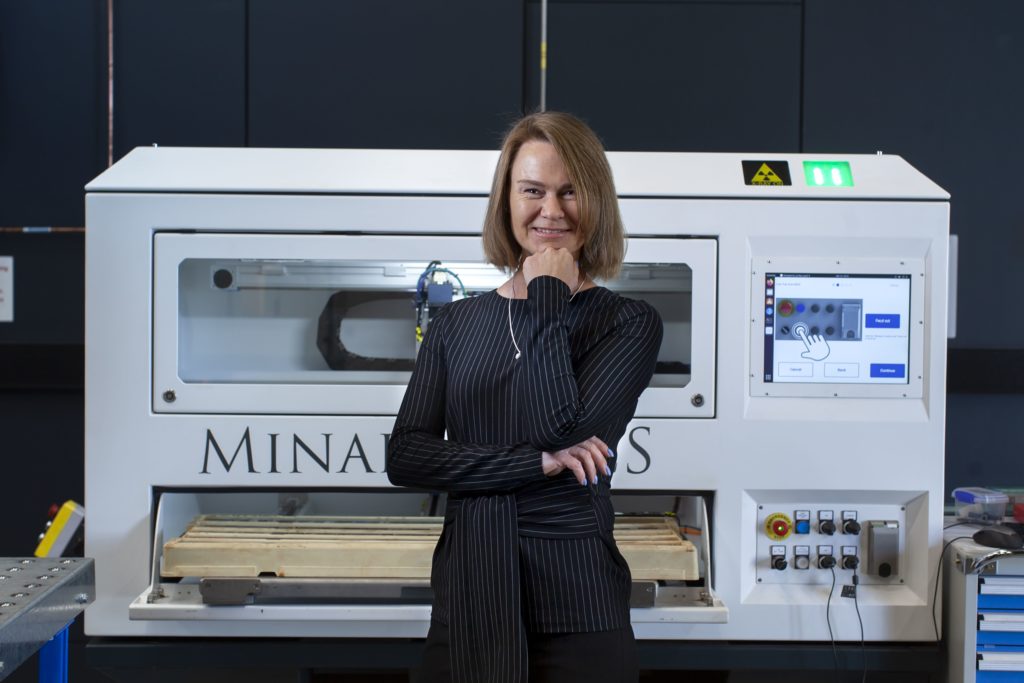Imagine what our lives will be like by the end of the decade. Well, our leaders are doing exactly that. We’re researching future science and technologies now for Australia in 2030.
Our future science platforms
Our science delivers a lot of exciting breakthroughs to make life better today. But we’re also busy working behind-the-scenes on science that takes a bit longer to develop. Science that will significantly change what the future looks like.
We call these areas of cutting-edge research our Future Science Platforms (FSPs). This is because they will be the foundations of tomorrow’s breakthroughs. We kicked off five new FSPs during 2021.
Our new Chief Scientist, Professor Bronwyn Fox, said the FSPs hold exciting insights into what life could look like.
“Harnessing science to solve our greatest challenges means that we can create a future that makes life better for everyone,” Bronwyn said.
“We benefit from our deep, trusted partnerships with industry to inform our horizon scanning. This ensures we are at the forefront of future scientific developments, and solving seemingly impossible problems, to design new technologies for the benefit of Australia.”
So, what do we think the future will hold? These are our five FSPs.
Quantum technologies
Quantum physics explains the behaviour of the world at the smallest scale. It shows how it is possible to sense, isolate, and control individual quantum particles. This develops previously unattainable properties that we can build into new technologies.
Quantum technologies are a major growth opportunity for Australia, forecast to bring in $4 billion in revenue and create 16,000 new jobs by 2040.
Dr Jim Rabeau leads our new Quantum Technologies program.
“Our focus is to grow our quantum capabilities and translate its research into solutions for real-world problems. These include materials discovery, precision healthcare, defence, and digital security and communications,” Jim said.
“By combining our extensive manufacturing, digital, and quantum devices expertise, we have an opportunity to strengthen Australia’s global position in the field.”

Microbiome FSP. Fungal hyphae (thread like structures), fungal spores, bacteria and actinobacteria growing on crop stubble. Image: CSIRO.
Microbiomes
We will invest $15 million to harness the functionality of microorganisms to solve challenges. These include diet and gut health, plant and animal diseases, food safety and degradation of pollutants.
Dr Alan Richardson is the Chief Research Scientist in our Microbiomes for One System Health program. This team will develop our capabilities across agriculture, land-use and human health.
“Microorganisms hold huge potential because they are integral in the makeup of all plants and animals. And they are the key drivers of biological and environmental processes,” Alan said.
“Our approach will reflect the interconnectivity of microbiomes across systems. It will identify new opportunities to manage the environment, transform food production, waste management, and plant, animal and human health.”

Dr Yulia Uvarova leads our Future Science Platform (FSP) Autonomous Sensors.
Autonomous sensors
Sensors connect the physical world to digital systems, enabling collection, integration, and interpretation of information. They allow us to rapidly understand and predict the world around us.
But innovation progress is limited by how advanced our sensors are. For example, there are no sensors that can measure minerals trapped inside raw rock materials. Or detect pests in fruit accurately as they move along a conveyor belt.
Dr Yulia Uvarova leads our Autonomous Sensors Platform. This research will develop sensors that could be used in environmental monitoring, health monitoring, mining, agriculture and manufacturing. It will also advance engineering for autonomy.
“Advances in these areas require innovations in sensor technology. We need to sense with increasing accuracy, sensitivity, traceability, and resolution,” Yulia said.
“In addition, with technology adapted for the uniquely Australian challenges of harsh environmental conditions and remote locations.”
Collaborative intelligence
What if humans and artificial intelligence came together to form a super team? What could they be capable of? This is an exciting new field of research called Collaborative Intelligence (CINTEL for short).
Dr Cecile Paris leads our $12 million CINTEL program, which aims to move beyond machines replacing people or automating parts of their jobs. Instead, it creates teams that maximise the benefits of both human and machine intelligence.
“Human intelligence is creative and adaptable, while machine intelligence is more specific and able to handle vast amount of data,” Cecile said.
“We want to create technologies and pathways to bring these two different, but complementary, types of intelligence together. We can create genuine teams where humans and machines pass tasks back and forth, and work together to achieve a common goal.”
Cecile said collaborative intelligence moves beyond the idea of machines replacing people or even just ‘keeping people in the loop’.
“Instead it aims to unlock completely new capability by creating teams that maximise the benefits of both types of intelligence. This is the next scientific frontier of digital transformation,” she said.
Valuing sustainability
Growing consumer and investor interest in sustainability is starting to drive demand for measures and indicators of diverse social and environmental outcomes.
A lot of attention is (rightly) on reducing greenhouse gas emissions and transitioning industries and regions to a low carbon future. However, ensuring sustainable outcomes for biodiversity, regional communities, Indigenous livelihoods and cultures – and many other aspects that society values – remains a big challenge.
Dr Peat Leith is leading our Valuing Sustainability Future Science Platform.
“A new generation of analysis and insight is needed. Markets are emerging for sustainability outcomes and these can be a powerful force in countering some troubling trends,” Peat said.
“For example, there’s growing interest in indicators that demonstrate social and environmental outcomes. One example is ‘premium’ carbon credits, which are increasingly defined by co-benefits, from biodiversity to economic and cultural benefits for Indigenous communities.”
There are lots of different ways that innovation – such as the development of indicators of sustainability – can drive change. How these get embedded in market and land management decisions will be critical to whether and how fast we are able to drive sustainability transitions.
“The Valuing Sustainability Future Science Platform is about driving sustainability decision-making through building our ability better to attribute change to practice, to track progress, and to embed these within markets and decision-making,” Peat said.

